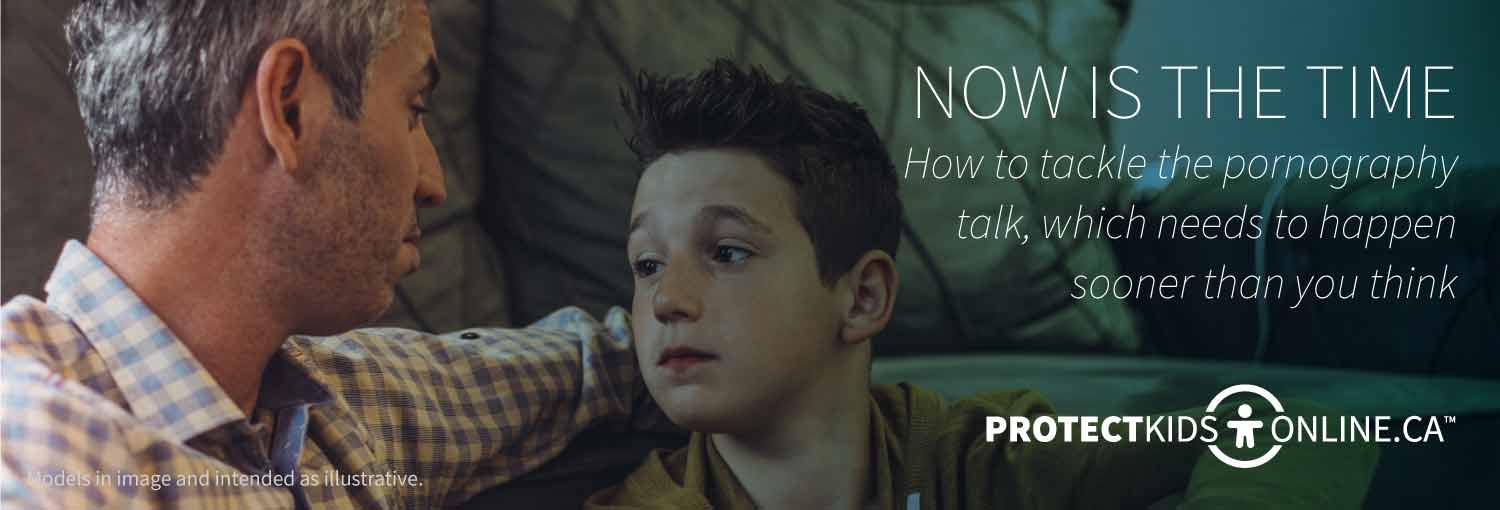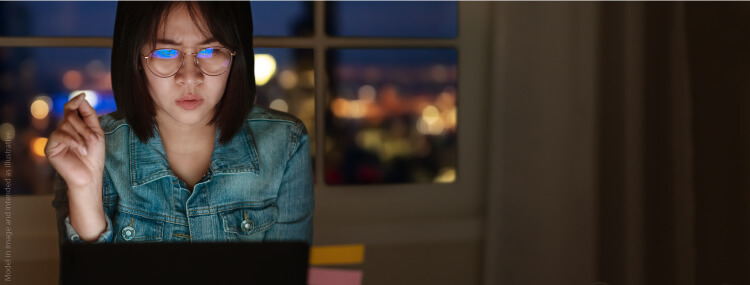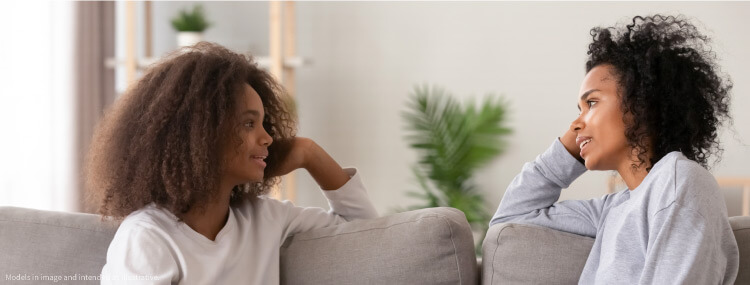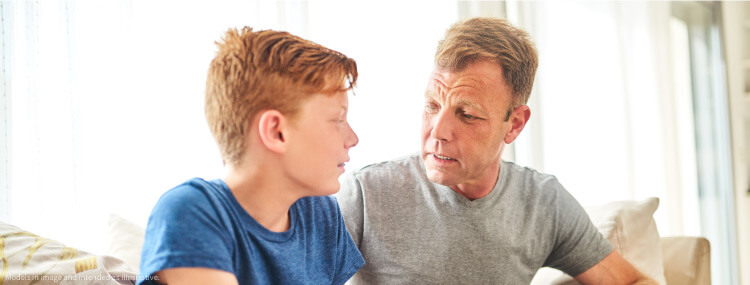Now is the Time
How to tackle the pornography talk, which needs to happen sooner than you think

Here’s the stripped down reality caregivers – if your kids are online, they are seeing pornography. In fact, according to Noni Classen, Director of Education for the Canadian Centre for Child Protection (C3P) kids likely as early as eight to 10 years old are coming across this content.
“They know more than you think. That’s why it’s critical we have conversations about pornography early,” she says.
Easier said than done, right? Broaching topics surrounding sex may be the last thing you or your child want to talk about. But Classen says if you come at it without judgment and frame it as skill building, it’s easier to explain WHY pornography is a problem and what children can do for their own safety and well-being.
Breathe; let’s begin.

If you find yourself staring at a browser history featuring XXX, don’t rush to your kid with questions, accusations, or punishments. Classen says there are two possible reasons you’re seeing these sites pop up:
- They clicked on it by accident. It’s extremely easy for kids to come across pornography online in a few misguided clicks.
- They went looking for it. As alarming as this might be, it’s developmentally normal.
“[Children] are curious. Of course they want to see naked people, they want to find out how do you have sex, how do you make children. And they should be curious; that’s absolutely normal,” explains Dr. Asa Kastbom, a child and adolescent psychiatrist at the University Hospital in Linköping, Sweden.
The problem isn’t necessarily the searching, its children’s lack of understanding that what they’re seeing is fictional adult entertainment and how it can misshape their view of what healthy sex and relationships look like.
“When I watch [pornography] I think, ‘Oh she may be drugged. That must hurt. That’s not how it is.’ But [children] think that’s the way to make love, that’s the way to have sex because they see [pornography] before they have had any sexual experiences of their own. They have no critical view of it,” explains Dr. Kastbom.

Just like all the other safety first you’ve discussed – crossing the street or staying home alone - children need to proactively be taught skills and provided with information that will help them stay safe. Pornography is no different.
Classen suggests coming at it with curiosity. Bring up a media story about pornography you’ve heard and ask them what they think about it. Ask them where they see pornography online. Ask what they think adults should be teaching kids about sex. Even just make something up; you don’t always have to make it specifically about your child.
“They may say, ‘I don’t know,’ and just shrug it off but it’s not always about their answers. You are planting a seed and starting that critical thinking process,” says Classen, adding these don’t have to be extensive conversations; they can be brief but frequent. “It’s about normalizing these discussions with your kids in order to get a better understanding of what they are facing online and how we as caregivers can help.”

This provides an opportunity to expand beyond the narrative that pornography is just “bad,” and explain WHY pornography may affect their mental health, physical well-being, and relationships. Classen suggests several points to review with children:
- Pornography is not real life; these are actors. Help children to understand it’s just like an action movie or TV drama. The storylines, interactions, and outcomes are scripted. Reality never plays out this way.
- The “relationships” being portrayed in these videos or images are not healthy. In pornography there is no discussion of consent – everyone is always up for sex and no one says “no.” The outright violence that is often shown is of course problematic, but pornography also features subtleties – like the lack of intimacy - that create confusion about the expectations and attitudes surrounding what healthy relationships look like.
- It reinforces harmful stereotypes. Men are portrayed as the aggressors and dominators, while women are there to do whatever the man pleases. Boys are often left to assume they are to perform certain acts, while girls feel pressured to comply; no one may WANT to actually do it, but they think it’s what they HAVE to do.
- It’s not actually healthy for your brain or body to watch. A 2014 research article in JAMA Psychiatry shows that pornography consumption is associated with decreased brain volume in certain areas which are similar to the changes seen in brains of individuals addicted to cocaine, alcohol, and methamphetamines.1
Furthermore, Dr. Kastbom states in her practice she sees teens using pornography as a shortcut to instant gratification or to regulate their mood – relieve stress, anxiety, depression – instead of dealing with the actual problem.
And, finally, one that might hit closer to home for the boys, Dr. Kastbom adds she’s seeing more and more teens becoming impotent. “They can’t perform in real life because they need explicit images; having normal sex is not enough to turn them on.”
Classen suggests offering an alternative – casually leave out appropriate books or share links to videos that discuss healthy sex and sexuality. “And, be available to answer questions, free of judgement,” she adds. “Yeah, it’s awkward, but you’re the safest person for kids to be having these conversations with.”
C3P offers free resources for teens and families that cover topics such as boundaries, sexual consent, stereotypes, and healthy versus unhealthy behaviours in relationships. Visit protectchildren.ca/order to download, or check out the associated video series.